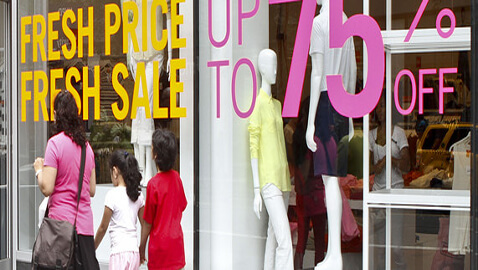
MasterCard Advisors SpendingPulse published a report that monitors how customers spend on well-liked holiday products said that sales in the two months prior to Christmas increased by 0.7 percent, as compared to 2011. However, it was well below the anticipated 3 to 4 percent.
This year shoppers were disinclined to shop, their enthusiasm dampened by Hurricane Sandy, the aftermath of the presidential election and feelings of pain and guilt about the senseless Sandy Hook massacre. Moreover, the continued budget stalemate at Capitol Hill is creating a lot of uncertainty amongst the shoppers and they would rather save that spend.
The persistent stalemate regarding the “fiscal cliff” and its ominous consequences that analysts and economists are forecasting has further instilled fear and apprehension in the minds of the people, who are becoming even more fiscally-conscious as with each passing day the 31 December deadline looms near.
Analysts say that if the American’s unwillingness to spend continues, it would further curtail economic growth and this would reflect in the growth numbers for the coming year.
Marshal Cohen, chief research analyst at the market research firm NPD Inc. said that even heavy discounts were not enough to entice shoppers to the stores. He said that a number of reasons combined to ensure that customers did not go beyond what they had already planned on buying.
Holiday sales are a vital barometer in measuring the country’s economic health. Most retailers see more than one-third of their total annual sales happen during the last two months of the year, with the other 10 months accounting for less than 60 percent of their sales. If these two months, November and December, do not aggregate expected sales, the retailer has to sell at heavy discounts, which eats into his profits and probably puts him into the red.
Almost three-fourths of all economic activity is fuelled by consumer spending and the two months buying data, accessed by SpendingPulse sheds vital light on data that is a crucial lifeline not just for the sellers, but also for their suppliers, manufacturers and all other links in the supply chain.
The SpendingPulse data information looks into shoppers buying of home appliances, garments, furniture and luxury goods from October 28th until the day before Christmas. This includes purchases made through cash payments, checks and credit and debit cards.
Even though the numbers are nothing to bring cheer and warmth to the wintry December, the last week of this moth could add substantially to the sales. As shoppers seek to lessen unsold stock, they offer tempting bargains, which can increase sales substantially and give a slightly better look to the dismal Tuesday statistics.
Last-minute buyers said that there were surprised to find that the discount offers now, were even better than what was being offered during Black Friday and Thanksgiving.
Poorer sales this year will ensure that the retailers begin 2013 on a cynical guarded note. They will place fewer orders and manufacturers will produce less as wholesalers will buy less. The lesser the goods available in the market, their prices could get pushed up. It’s a vicious cycle that does not portend well for the US economy.
